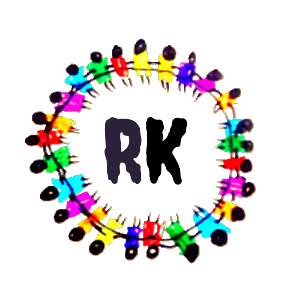This plan is going to help you learn JavaScript within four weeks, systematically. Each day represents a schedule of some learning that is followed by exercises and then building small projects. Feel free to adjust the pace according to your satisfaction.
Week 1: Getting Started with JavaScript
Day 1: Introduction to JavaScript
Learn: What is JavaScript, Setting up the environment, Using the console
Practice: Writing and running the basic JavaScript code in the console.
Project: Create a basic HTML page and embed a JavaScript script in it.
Day 2: Basic Syntax and Data Types
Learn: Variables, data types: numbers, strings, booleans, and operators.
Practice: Variable declaration, basic arithmetic, string concatenation.
Project: Development of a basic greeting message generator.
Day 3: Control Structures
Learn: If-else statements, comparison operators
Practice: Write simple programs that use conditional statements.
Project: Implementation of a number guessing game.
Day 4: Loops
Learn: For loops, while loops.
Practice: Write loops to perform repetitive tasks.
Project: print the first 10 numbers in the Fibonacci sequence:
Day 5: Functions
Learn: Function declarations, parameters, return values.
Practice: Write functions to perform specific tasks.
Project: Create a calculator with basic arithmetic operations.
Day 6: Arrays
Learn: Array declaration, accessing elements, array methods.
Practice: Perform operations on arrays.
Project: Build a to-do list where tasks can be added and removed.
Day 7: Review and Project Day
Review: Review the concepts learned during the week.
Project: Go through quiz application with multiple-choice questions
Week 2: DOM Manipulation and Events
Day 8: Introduction to the DOM
Learn: What is the DOM, selecting elements.
Practice: Use getElementById, getElementsByClassName, querySelector.
Project: Highlight specific elements on a webpage.
Day 9: Modifying the DOM
Learn: Changing element content, attributes, styles.
Practice: Update HTML elements using JavaScript.
Project: Building a simple page where users can change the color of text.
Day 10: Event Handling
Learn: Adding event listeners, handling events.
Practice: Create buttons that respond to user clicks.
Project: Build an interactive form that validates user input.
Day 11: Advanced Event Handling
Learn: Event propagation, event delegation.
Practice: Handle events on dynamically added elements.
Project: A project on a dynamic to-do list where tasks should be added, removed, and marked as completed.
Day 12: Working with forms
Learn: Form elements, form validation.
Practice: Write JavaScript to validate form data.
Project: Create a contact form which has validation.
Day 13: Local Storage
Learn: How to use local storage to store data.
Practice: Store and retrieve data in local storage.
Project: Take the to-do list further to save tasks in local storage.
Day 14: Review and Project Day
Review: Review concepts of the week.
Project: Create a small web application that uses forms, events and local storage.
Week 3: Advanced JavaScript Concepts
Day 15: Functions and Scope
Learn: Function expressions, arrow functions, scope.
Practice: Use different types of functions and understand scope.
Project: Build a simple task manager with functions.
Day 16: Closures and Callbacks
Learn: Closures, higher-order functions, callbacks.
Practice: Write functions that use closures and callbacks.
Project: Create a countdown timer with callbacks.
Day 17: Promises and Async/Await
Learn: Promises, async/await.
Practice: Write asynchronous code using promises and async/await.
Project: Build a simple app that fetches data from an API.
Day 18: Working with APIs
Learn: Fetch API, handling responses.
Practice: Fetch and Display Data From a Public API. Project: Create a weather app that displays the current weather.
Day 19: ES6 Features
Learn: Let, const, template literals, destructuring, spread/rest operators in ES6.
Practice: Use ES6 features in your code.
Project: Refactor previous projects to ES6 syntax.
Day 20: Classes and OOP
Learn: ES6 classes; object-oriented programming concepts.
Practice: Create classes, instantiate objects
Project: Build a simple Library App that manages Books using classes.
Day 21: Review and Project Day
Review: Review advanced concepts learned during the week.
Project: Building a more complex application that integrates asynchronous operations, API calls, and ES6 features.
Week 4: Building and Deploying Projects
Day 22: Modular JavaScript
Learn: Modules, import/export statements.
Practice: Split your code into modules.
Project: Modularize a past project.
Day 23: Webpack and Build Tools
Learn: Introduction to Webpack, Setting up a build process.
Practice: Bundle your JavaScript code with Webpack.
Project: Configure a build process for a project.
Day 24: Testing JavaScript
Learn: How to write tests using frameworks like Jest.
Practice: Write unit tests for your functions.
Project: Add tests to a project.
Day 25: Debugging and Best Practices
Learn: How to debug, and best practices when writing clean code.
Practice: Debug code and refactor for readability.
Project: Review and improve a previous project.
Day 26: Building a Full Project
Project: Start working on a real project—a personal portfolio site or a small web app.
Day 27: Continuing the Project
Project: Continue the full project by adding features learned earlier.
Day 28: Final Review and Deployment
Review: Review all concepts learned over the past month.
Deploy: Now deploy your Final Project on either GitHub Pages, Netlify, or Vercel.
Additional Tips
Daily Practice: Connect to a computer daily for at least 1-2 hours of actual coding to help solidify what is learnt.
Seek Help: You should join online forums, be an active member in coding communities, and never be afraid to ask a question if stuck.
Create Real Projects: Apply knowledge by building projects that are real and interesting to you. This will solidify the understanding and hence improve the skills.
With this mapped-out calendar, you’ll be well on your way to learning JavaScript in a month.


Leave a Reply